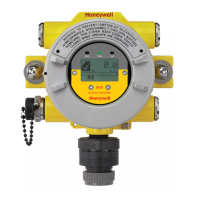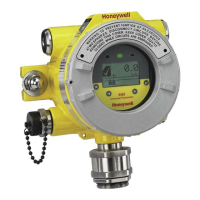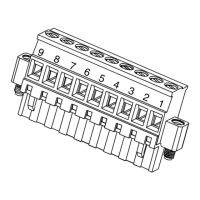XNX Universal Transmitter
Installation and Operation
30
Sensor Mounting and Location
Warning: Installation must be in accordance with the recognized standards of the
appropriate authority in the country concerned.
Warning: Before carrying out any work, ensure that local regulations and site procedures
are followed. Appropriate standards must be followed to maintain the overall certification
of the sensor.
Caution: Locate transmitters and sensors in accordance with relevant local and national
legislation, standards, and codes of practice.
Caution: Do not locate the transmitter where it will be exposed to direct sunlight.
Caution: Replace a detector only with another of the same type.
Caution: Mount detectors where the gas is most likely to be present.
When determining the placement of sensors, follow the advice of
safety and engineering personnel and experts having specialist
knowledge of gas dispersion, the process plant system, and
the equipment involved. Record the agreement reached on the
location of sensors. Consider these factors when locating gas
sensors:
• possible damage caused by natural events such as rain or
ooding
• ease of access for functional testing and servicing
• how escaping gas may behave due to natural or forced air
currents.
Mounting the Transmitter
The transmitter can be mounted in a number of ways using
the integral mounting tabs. The transmitter can be attached
to at wall surfaces or to Unistrut
®
.
With the optional pipe
mount kit, the unit can be mounted to pipe of diameter 2” to
6” (50 to 150mm). A ceiling mount bracket kit is also available.
1.67"
42.41 mm
5.6"
124.24 mm
6.00"
15.4 mm
7.75"
196.85 mm
4.48"
113.8 mm
0.625"
15.88mm
2.054"
52.18mm
0.945"
24mm
1.2"
31.75mm
1.768"
44.90 mm
3.176"
80.67 mm
1.768"
44.90 mm
0.55"
14.35 mm
6.138"
158.75mm
Figure 22. XNX Universal Transmitter mounting dimensions and clearances

